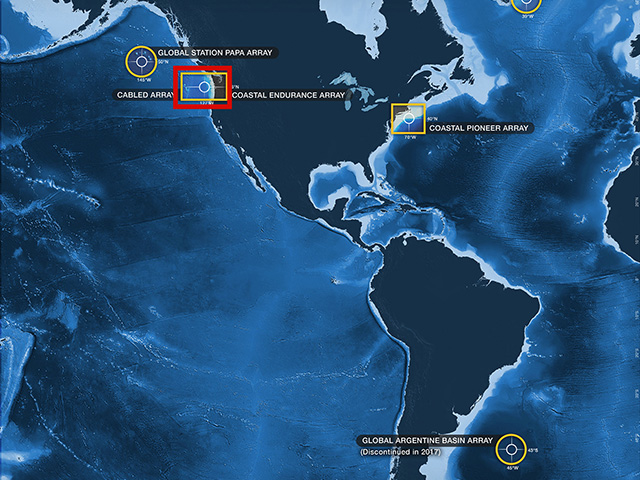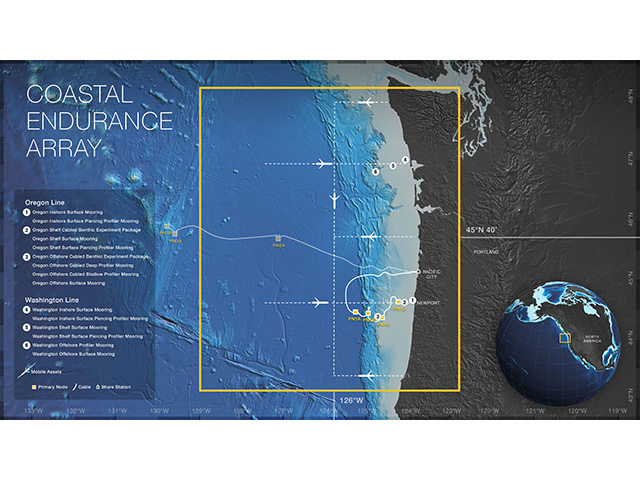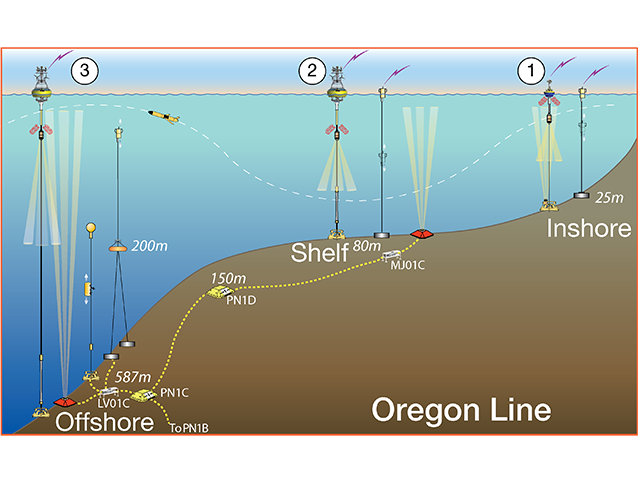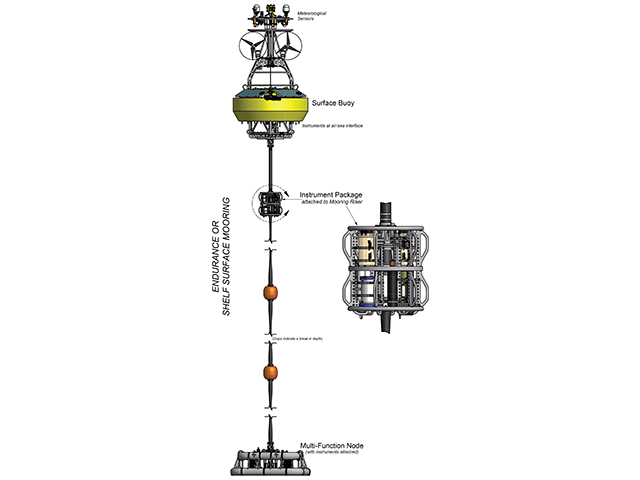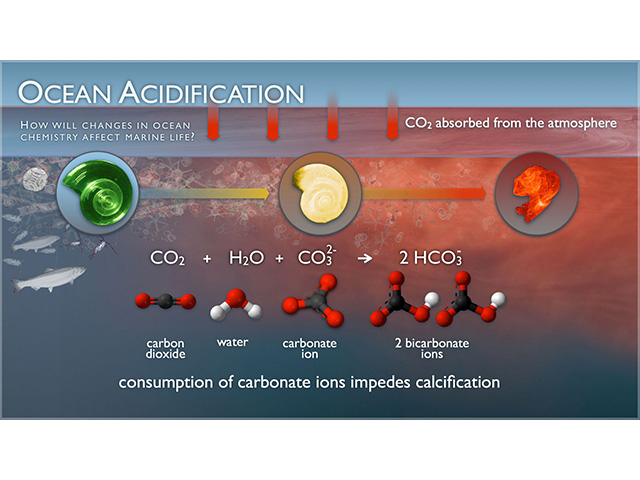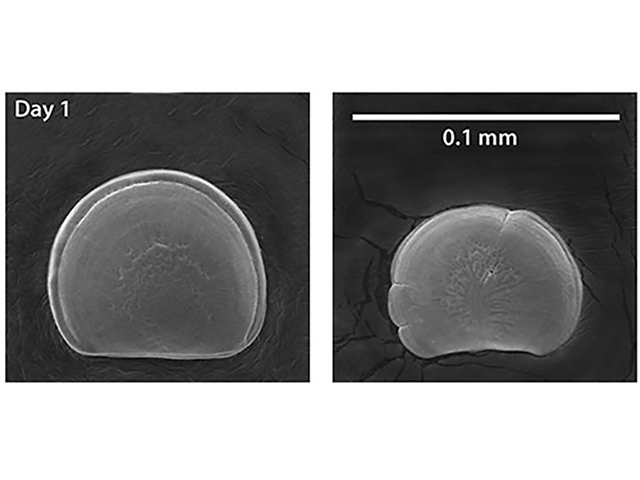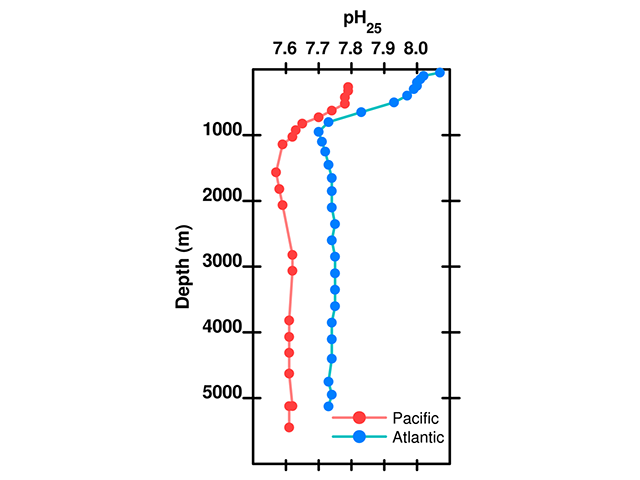Impacts of Ocean Acidification on Shellfish in the Pacific Northwest Exploration
Your Objective
How do changing weather conditions and ocean circulation patterns affect ocean pH?
This pH data is from the subsurface (at 7m) at this location. Click next to add another dataset.
Data Tips
Datasets for this activity come from the Coastal Endurance Array Oregon Shelf Surface Buoy and Oregon Inshore Surface Mooring(see dataset section below for details about these locations and instruments).You can interact with the data by:
- By clicking on the Next button you can add more data sets.
- Examine the different data sets to see if they have similar patterns.
- Zoom in and out to see if changes in one type of data correlate with changes in another, or if there is a lag between the two. You can zoom by grabbing the sliders on the graph underneath the pH graph, or by clicking and dragging sliders on any of the subsequent graphs of pCO2, temperature or wind speed.
- Note that the wind data shows only that part of the wind parallel to shore. Positive values indicate wind blowing to the north, negative values to the south
Questions for Thought
- List the variables displayed in these graphs.
- Describe the location where this data was collected.
- Across what time period were the data collected?
- What was the lowest pH value observed? When was it observed?
- Examine each data set (pH, seawater pCO2, temperature and wind direction) and explore how it changes through time. What patterns do you see for each individual data set over the course of a month?
- Do you see any similarities or differences in how these data vary?
Background Information
Click on the images below to learn more about where and how the dataset above was collected.
Dataset Information
The data for this activity was obtained from the following Coastal Endurance instruments:
- pH (7m) @ Oregon Shelf Surface Mooring (CE02SHSM-RID26-06-PHSEND000)
- pCO2 (1m) @ Oregon Shelf Surface Mooring (CE02SHSM-SBD12-04-PCO2AA000)
- Seawater Temperature (25m) @ Oregon Inshore Surface Mooring (CE01ISSM-MFD37-03-CTDBPC000)
- Winds (3m above sea-level) @ Oregon Shelf Surface Mooring (CE02SHSM-SBD11-06-METBKA000)
Datasets were downloaded from the OOI data portal, outliers were removed, and then hourly (mean) averages of seawater pH, pCO2, temperature, salinity and wind speeds were calculated and merged together into a single file.
See this Jupyter Notebook for details on how the data for this activity was processed.
Activity Citation: Gerken, S., Greengrove, C., Nuwer, M., Smith, S., & Lichtenwalner, C. S. (2020). Impacts of Ocean Acidification on Shellfish in the Pacific Northwest. OOI Data Labs Collection.
